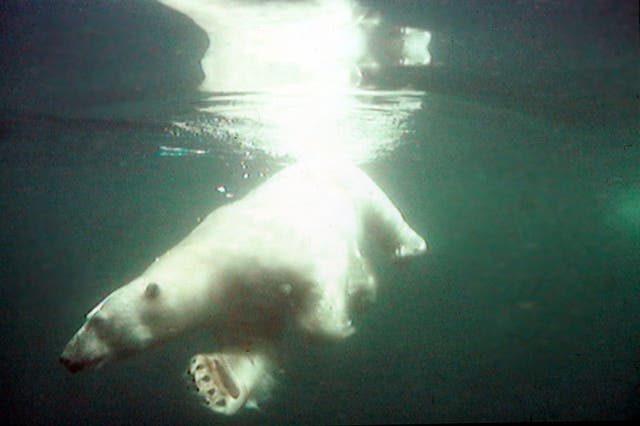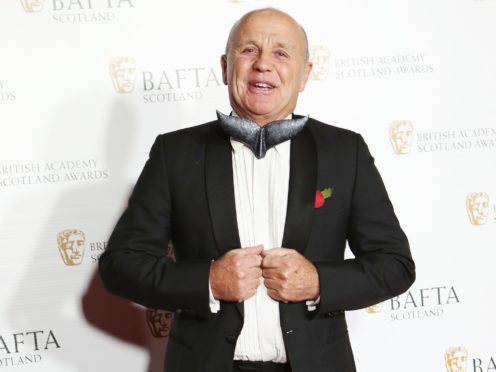An award-winning cameraman has praised Scotland’s scenery and said it is one of the best places in the world to learn how to dive.
Doug Allan, originally from Dunfermline, has worked on series including Blue Planet and Frozen Planet, going on to win five Baftas and four Emmys, among other industry awards.
The 68-year-old had years of experience working with the British Antarctic Survey before even picking up a camera and heading down a whole new career path as a freelance film-maker.

He started diving in 1968 and said it was a much longer process than today’s prospective divers face – although the Scottish weather is still providing good year-round training opportunities.
Speaking to the PA news agency, he said: “Would you believe, you can see the sort of equipment that we used to use if you look in museums.
“Back in those days there wasn’t anything like the number of divers being trained that there are being now with the explosion, huge increase of tourism, it’s put diving really within the grip of anyone.
“Anyone who’s at home in the water can be taught to dive fairly quickly – not to look after themselves or to look after other people but certainly go and experience the wonders of a coral reef or something like that.”
He added: “I think if you learn to dive in Scotland and then you pile into several hundred dives to experience the weather, the cold all these kind of things then … everything else is almost straightforward. Except of course diving under the ice.
“I’ve seen the world encompass some big changes but I’ve also seen the world at its very best and it’s funny you know I sometimes get asked what’s on your bucket list, where would you like to go next.
“I’m looking forward to spending more time in the UK … particularly Scotland and the west coast of Ireland.
“When those two are at their best they are unsurpassable. It really is the most beautiful scenery on our doorstep.”
Over the years he has travelled the world in both a diving and filming capacity – but has also ventured into TV commercials, documentary-making, writing a book and some public speaking.
One of the questions he is most often asked is: “How did you become a wildlife film-maker?”
He can pinpoint that to a “chance meeting with David Attenborough”.
Mr Allan said: “Some people assume that right from being a wee boy that is what I wanted to do.
“But actually, the first passion I had was diving, getting in the sea.
“I enjoyed the excitement of underwater things as they were in the 60s.
“We were kind of going into two frontiers – we were pushing away out to the moon but we were also going to the bottom of the sea.
“When I graduated (from Stirling University) I came out and did various jobs to do with diving, went to the Red Sea to work with some biologists, worked for a year with Bill Abernethy, who was Scotland’s last full-time professional pearl fisherman.
“Then I went to the Antarctic and that’s when I as a diver discovered photography.”
He explained: “It was a chance meeting with David Attenborough, of all people, in 1981. He turned up in our base with a small film crew.
“I helped him for a couple of days and quite literally at the end of those two days I looked at the cameraman and thought ‘you know, you are doing all the things I like doing’.
“Photography, albeit movies rather than still, travelling the world, obviously having a great time, shooting wildlife, diving.
“Even though at that point I had not picked up a movie camera that’s more or less where I thought that’s what I want to be.
“David and the others were really helpful, gave me a bit of advice and things.
“The next trip to the Antarctic I bought a 16mm movie camera and in the wonderful naiveness of youth I went and did some filming of emperor penguins and sold the footage to BBC when I went back.
“That’s where it all started.”
The Scot is also planning his own piece about climate change in the Arctic and will return to Antarctica next year with the Peruvian navy to film their new research vessel.
Mr Allan said: “In terms of my passions, what I do, everything started with diving and diving has been at the core of what I’ve done during the whole of my career.
“People say to me ‘tell us something about your career path’ and I say ‘well it’s not so much a career path as much as a careering path’.
“It’s just flowed from one interest to the next and if I hadn’t met David I probably would still be doing stills photography and writing but I may not have gone into television.
“It’s not just one job it’s a different job every time you go out on shoots or assignments but it’s also about being a freelance and as such I like to think I’ve got lots of strings for my bows.”
– Doug Allan is the new ambassador for Old Pulteney’s Rise With The Tide campaign.










